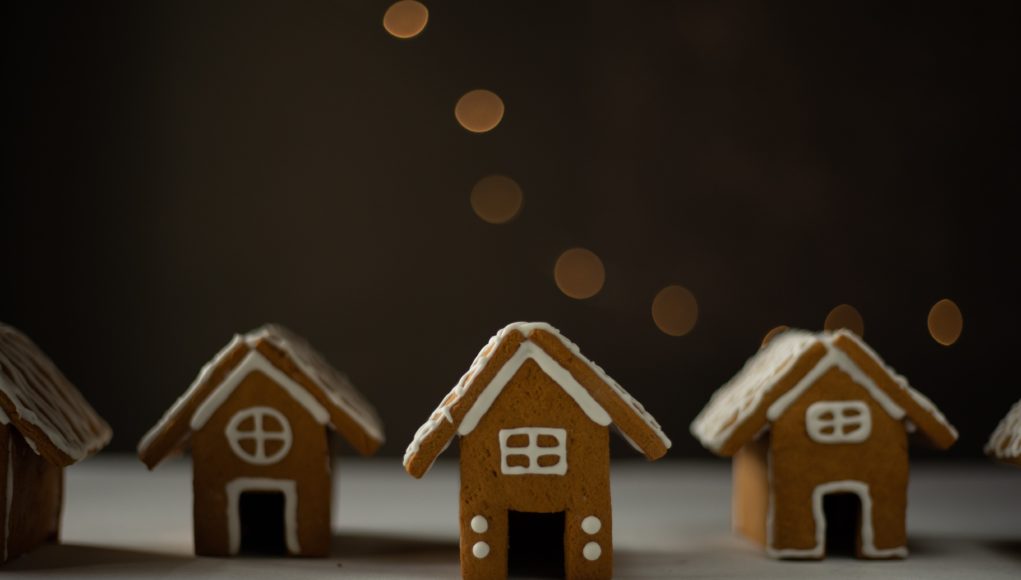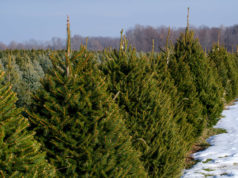by Ciara Wallace and Lily Krivanek
Everyone loves the holiday season, no matter what holidays you celebrate or what traditions your family does. But, have you ever wondered where the most popular Christmas traditions come from? Often the origins of these traditions have bizarre beginnings. Here are three common traditions with interesting origins.
One beloved Christmas tradition is kissing under the mistletoe. According to an article by Green Global Travel, the mistletoe was important to the Native American Indians, the Celtic Druids, and the Norse. The druids believed that the mistletoe cured nervous diseases, infertility and that it kept the evil away. Also, according to an article from TIME, written by Kat Moon, kissing under the mistletoe might have traced from a tale in Norse mythology about the god of Baldur when Loki made a spear out of mistletoe and used it to kill Baldur. In some tellings, Baldur’s mother, Frigg calls the mistletoe a symbol of love after Baldur’s death and vows to kiss anyone who passes under it but Historian Mark Forsyth claims that this is not how the story ended. This may have influenced the relationship between mistletoe and love. The tradition of kissing under the mistletoe began somewhere between 1720 and 1784 because an English apothecary and physician wrote two books about mistletoe in 1719 and 1720 with a part of it being about superstitions and customs associated with mistletoe but nothing about kissing under the mistletoe, and the earliest reference of kissing under the mistletoe that Forsyth and other historians found comes from a song published in 1784.
“What all the men, Jem, John, and Joe,
Cry, ‘What good-luck has sent ye?’
And kiss beneath the mistletoe,
The girl not turn’d of twenty.”
Mark Forsyth guesses that the tradition started with “a particularly lusty and inventive boy, and a particularly gullible girl.” Kissing under the mistletoe became much more popular in 1820 after an American writer named Washington Irving published The Sketch Book about part of his trip in England in the chapter titled “Christmas Eve” saying that “The mistletoe is still hung up in farm-houses and kitchens at Christmas, and the young men have the privilege of kissing the girls under it, plucking each time a berry from the bush. When the berries are all plucked the privilege ceases,” because kissing under the mistletoe was mentioned in The Sketch Book, a lot of Americans became accustomed to it.
Another fun tradition is, of course, the Advent Calendar. Each day on the advent calendar is a day closer to Christmas and a treat for you, whether that is the traditional chocolate or toys, kits, and more. But where does this tradition come from? The Christian season of Advent is the period of four Sundays before Christmas. But most Advent Calendars and sometimes Advent itself starts on December 1 and ends December 24, Christmas Eve. Gerhard Lang is known for being the first popular creator of the paper advent calendar, created in the 1900s. However, his calendar did not include a sweet treat. The first chocolate calendar was created in 1958, but the chocolate advent calendars were not widely popular until the 1980s.
Last but not least, one of the most loved Christmas traditions is decorating gingerbread cookies. Kids of all ages have fun decorating houses during the holiday season. Believe it or not, the first recipe for gingerbread came from Ancient Greece 2400 BC, and the first decorated gingerbread came from the Middle Ages in Europe. According to PBS’s article, Queen Elizabeth I had cookies shaped like little people decorated to please some important people coming to visit her. After that, the cookies were shaped differently for each season (Flowers for spring, birds for summer, etc.) Perhaps the tradition of eating gingerbread for spring, summer, and fall died out because nowadays we think of gingerbread as a winter dessert. The tradition of decorating gingerbread houses almost certainly comes from Germany in the 19th century after the Brothers Grimm story Hansel and Gretel came out. Gingerbread houses were decorated to resemble the candy house in the story that was used to lure children to the mean old lady, who would eventually eat them. German settlers brought this with them to North America. A different variant to the gingerbread cookies is soft gingerbread, baked in a pan. It was introduced to North America by German settlers. George Washington’s mother, Mary Washington, served it to french military officer Marquis de Lafayette and from then on, it was called Gingerbread Lafayette. It was a Washington family favorite for many generations.
All in all, traditions can have wacky beginnings, but whatever traditions you plan to celebrate this year, we hope you have a wonderful month filled with family and friends.
Cites:
https://greenglobaltravel.com/christmas-traditions-around-the-world/
https://time.com/5471873/mistletoe-kiss-christmas/
https://www.whychristmas.com/customs/advent.shtml
https://www.pbs.org/food/the-history-kitchen/history-gingerbread/#:~:text=Gingerbread%20houses%20originated%20in%20Germany%20during%20the%2016th%20century.&text=Their%20popularity%20rose%20when%20the,treats%20deep%20in%20the%20forest.




